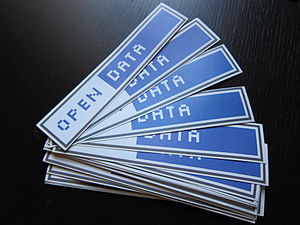
What is the benefit of open access to academia?
Who will pay for open education resources? These questions and many more are answered by our live chat panel.
Matthew Cockerill, managing director of open access publisher BioMed Central
When looking at global impact, open access is definitely not just about North – South information transfer: BioMed Central ran its second Open Access Africa event this week in Ghana. These events have proved to be inspirational, with the enthusiasm and passion for open access from African researchers creating a completely unique atmosphere. Open access not only increases access to established journals for African researchers, but it also helps African journals to evolve to server the global research community. Check out the Pan-African Medical Journal for a great example of a locally run African open access journal with great international visibility.
Academic societies could increase readership and impact via OA: Many small societies have journals which barely break even, and may struggle to gain visibility and readership, as they suffer attrition in subscriptions due to library budget squeezes. These societies have a huge amount to gain from open access in terms of increasing readership and impact. The Journal of Cardiovascular Magnetic Resonance, for example, is a society journal which increased its impact factor from 2.278 to 4.328 following a move to open access. We actually have several such society case studies online.
Erecting a paywall around content isn’t going to make your open access journal economically viable: There are many ways to make an open access journal economically viable but a paywall isn’t one of them. Looking at BioMed Central’s journals, while the majority are funded through author-facing fees, a good number are centrally supported by research organisations whose mission includes not only the funding of research, but also the communication of research, and so have no author fees.
The SCOAP3 project in high energy physics is an interesting example of a relatively well-defined field, in which the authors and readers come basically from the same small set of institutions. There has now been a collective agreement to simply ‘flip’ the model, committing to pay publishers approximately the same as was being paid in subscription fees, but making all the content open access. No one loses out (not even the publishers), and the community gains barrier-free access to high-energy physics research.
Mandates work pretty well to engage academics in OA: Mandates have had success, interestingly, both when they have been externally imposed (like the Wellcome Trust’s) or self-imposed, like those at the Harvard Faculty of Arts & Sciences, and more recently at Princeton.
Steve Carson, external relations director, MIT OpenCourseWare
OCW raises important questions about the mission of the university: An important aspect of OCW is that it forces a discussion of intellectual property and the mission of the university in the dissemination of knowledge with a bit of urgency. I actually think this is the biggest impact of the new “Share” button on Blackboard. Now, suddenly, schools using Blackboard are going to have to have these discussions. I wonder how many of them have even thought about the IP implications of their faculty openly sharing content and research before. This discussion I think permeates the teacher-researcher divide.
OA contributes to student experience: OER and OA are important change agents in reimagining the campus-based experience. MIT as an institution now knows much more about its own curriculum through OCW and is beginning to think about ways of reshaping it. With so much more of our own teaching captured in this way, we have opportunities to make the educational experience for our own students more flexible, personal and effective. And those benefits in turn encourage OER production to become a more entrenched part of general academic practice.
Traditional publishers are looking for ways to adapt. Work with them: In 2008, MIT signed an agreement with an “E” journal publisher that allows us to publish illustrations and excerpts from their articles under our open content license. Traditional publishers see that things cannot go on as they are, and they are looking for ways to adapt. Find compromises and start partnerships.
Bookmark this page for “open access education” and check back regularly as these articles update on a very frequent basis. The view is set to “news”. Try clicking on “video” and “2” for more articles.







